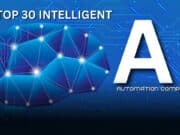Top 10 AI Technologies Shaping the Future: AI is transforming various industries by enhancing capabilities and automating processes. Here are the top 10 AI technologies and tools that are making significant impacts in 2024.
AI is transforming various industries by enhancing capabilities and automating processes. Here are the top 10 AI technologies and tools that are making significant impacts in 2024.
1. OpenAI GPT-4 Overview: GPT-4 is a state-of-the-art language model developed by OpenAI. It’s known for its ability to understand and generate human-like text. Key Features: Advanced natural language understanding, text generation, and conversational capabilities. Use Cases: Customer service chatbots, content creation, educational tools, and more. For example, GPT-4 can draft emails, write articles, and assist with coding. Pros and Cons: Highly accurate and versatile, but requires significant computational resources and can be expensive to deploy. Link: OpenAI GPT-4
2. Google DeepMind Overview: DeepMind is a pioneer in AI research, achieving notable breakthroughs like AlphaGo and AlphaFold. Key Features: Advanced machine learning algorithms, reinforcement learning, and a focus on solving complex problems. Use Cases: Healthcare (e.g., AlphaFold for predicting protein structures), gaming (e.g., AlphaGo), and more. Its algorithms are used to optimize data centers and improve patient care. Pros and Cons: Cutting-edge research with groundbreaking results, but implementations can be complex and resource-intensive. Link: Google DeepMind
3. IBM Watson Overview: IBM Watson provides AI-driven analytics and decision-making tools, widely used in various industries. Key Features: Natural language processing, machine learning, data analysis, and cognitive computing. Use Cases: Healthcare diagnostics, financial services, customer support, and more. Watson helps doctors diagnose diseases and financial analysts detect fraud. Pros and Cons: Powerful analytics and industry applications, but can be costly and complex to integrate. Link: IBM Watson
4. Tesla Autopilot Overview: Tesla’s Autopilot is leading the way in autonomous driving technology, offering advanced driver assistance systems. Key Features: Self-driving capabilities, real-time traffic analysis, lane keeping, and adaptive cruise control. Use Cases: Autonomous vehicles, driver assistance systems, and enhancing road safety. Autopilot can manage highway driving and navigate through traffic. Pros and Cons: Innovative and enhances driving safety, but still under regulatory scrutiny and requires constant software updates. Link: Tesla Autopilot
5. Amazon Alexa Overview: Alexa is a virtual assistant AI developed by Amazon, known for its voice recognition and smart home integration. Key Features: Voice recognition, smart home integration, AI-driven responses, and skills for various tasks. Use Cases: Home automation, personal assistant tasks, entertainment, and more. Alexa can control smart home devices, provide weather updates, and play music. Pros and Cons: Widely used and continually updated with new features, but raises privacy concerns and sometimes misunderstands commands. Link: Amazon Alexa
6. Microsoft Azure AI Overview: Azure AI offers a comprehensive suite of AI services and tools for developers and businesses. Key Features: Machine learning, cognitive services, AI infrastructure, and pre-built models. Use Cases: Enterprise applications, AI model deployment, data analytics, and more. Azure AI helps businesses automate processes and gain insights from data. Pros and Cons: Scalable and integrates well with other Microsoft services, but requires technical expertise and can be costly depending on usage. Link: Microsoft Azure AI
7. NVIDIA GPUs Overview: NVIDIA’s GPUs are crucial for AI development and deep learning, offering unparalleled performance. Key Features: High-performance computing, parallel processing, AI acceleration, and support for major AI frameworks. Use Cases: Deep learning, AI research, gaming, and more. NVIDIA GPUs power data centers, scientific research, and high-end gaming rigs. Pros and Cons: Exceptional performance and widely supported, but can be expensive and require significant power and cooling. Link: NVIDIA GPUs
8. Hugging Face Transformers Overview: Hugging Face’s Transformers library is a leading tool for natural language processing (NLP). Key Features: Pre-trained NLP models, easy integration, and a supportive community. Use Cases: Text classification, language translation, sentiment analysis, and more. It powers chatbots, content moderation, and language understanding. Pros and Cons: Versatile and backed by a strong community, but can be complex for beginners and requires fine-tuning for specific tasks. Link: Hugging Face Transformers
9. UiPath Overview: UiPath specializes in robotic process automation (RPA) using AI to streamline business processes. Key Features: Process automation, AI-driven bots, workflow optimization, and user-friendly interfaces. Use Cases: Automating repetitive tasks, data entry, customer service, and more. UiPath bots can handle invoice processing, data extraction, and customer queries. Pros and Cons: Increases efficiency and reduces human error, but requires initial setup and customization. Link: UiPath
10. OpenCV Overview: OpenCV is an open-source library for computer vision and machine learning, widely used in various applications. Key Features: Image processing, object detection, facial recognition, and a vast library of functions. Use Cases: Security systems, medical imaging, augmented reality, and more. OpenCV is used in surveillance systems, diagnostic tools, and mobile apps. Pros and Cons: Free and flexible with a large community, but may require coding skills and in-depth knowledge of computer vision. Link: OpenCV
These AI technologies and tools are revolutionizing various fields, from healthcare to autonomous driving. Stay updated with the latest advancements to leverage the full potential of AI.

































[…] Companies to Watch: Intelligent Automation (IA) is transforming industries by integrating advanced technologies like artificial intelligence and machine learning into daily operations. Here, we explore 30 […]